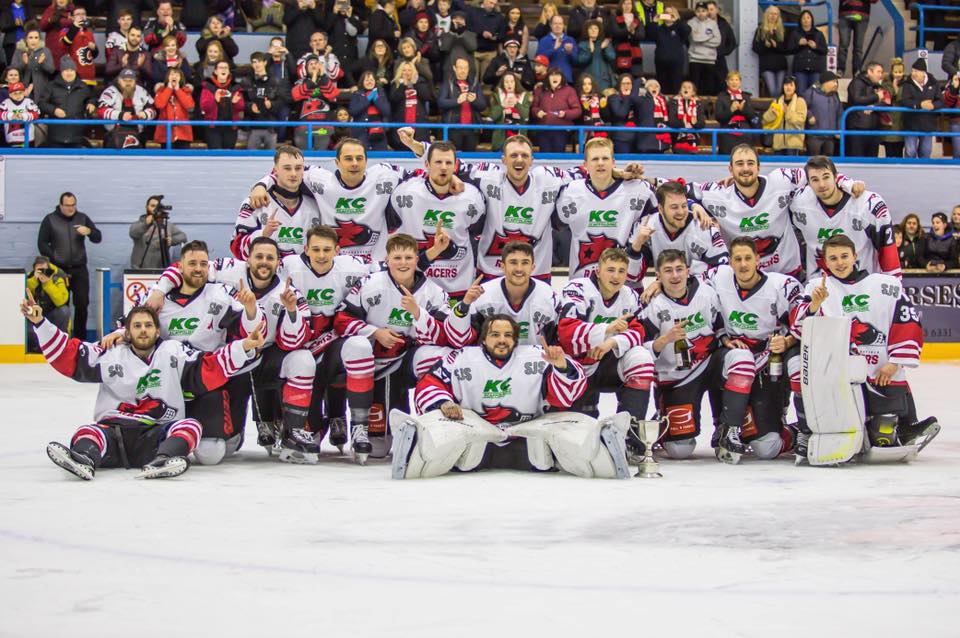
As of June 2023, only 5% of 8,230 consumers in the UK show an interest in ice hockey. You would expect that percentage to be much higher for a sport with deep roots in UK history.
So, why is ice hockey less popular than most other sports in the UK? The following factors give you an insight into the underlying causes.
High Financial Barrier
A high financial barrier is one of the primary reasons for ice hockey’s low popularity amongst other sports in the UK.
The prices of the playing equipment are through the roof, and getting ice time is even more expensive because there are limited ice rinks in the UK. For more context, skates cost about £220, the stick goes for about £120, trousers sell at £75 on average, and so on. Shoulder pads/body armour, a helmet, jock, and mouth guard are other equipment required for practice. In total, everything comes down to about £861.
The implication?
Fewer people have a chance to play ice hockey. Consequently, there are fewer grassroots teams. Fewer people share a connection with the sport. Ice hockey had only 117,000 participants in England in 2020, dropping significantly from the amount recorded in 2016.
While this doesn’t imply that only the rich can play the sport, it’ll take some next-level love and passion to sacrifice so much for time on the ice rink.
Limited Betting Opportunities
Undoubtedly, sports betting is a vital aspect of British sports culture. Wagering on sporting event outcomes adds a different spice to the activity, thus driving engagement. This excitement is evident in the number of new gaming sites UK players have access to every day.
Aside from the fact that football fans are very passionate, the sport also gives them numerous betting options and gaming odds, from Premier League matches to non-league games. Hundreds of games take place each week. As such, the availability of betting opportunities in other sports, like football, contributes to their popularity.
On the other hand, ice hockey betting just doesn’t compare to football betting for many reasons. First, there are not as many betting options as in football. Most bets surround match winners, period-specific outcomes, and total goals. With football, there are over a hundred betting options like scorers, correct match scores, winners, and losers. On top of that, there’s always at least one football competition to bet on all year. On the other hand, ice hockey runs on a seasonal basis, with the minimal betting options further reducing during the off-season.
In addition, only a few bookmakers in the UK accept wagers on the outcomes of the UK Elite Ice Hockey League games. This lack of betting opportunities makes ice hockey less prevalent in the UK. And, there are much fewer professional teams to bet on—you’ve only really got the 10 in this league. In contrast, there are 72 professional football clubs in England and Wales alone, and that’s before considering the Scottish leagues, too.
Popularity of Other Sports
Unlike ice hockey, most people enjoy many other sports that require little expense. Again, football comes to mind. It is considered to be the UK’s favourite and most popular sport. And you can feel that with the sheer volume of Sunday Football Leagues around you.
Riddle me this: How would you compare fans’ reactions if the National Ice Hockey or English Football teams were in the World Cup Finals?
The response of most UK citizens to that question is one reason why ice hockey is less popular than other sports. People are simply more fond of other sports like football and rugby than ice hockey. Of course, this fondness can be linked to the ease of access and cost of participation. A pair of football boots costs about £220 – £280, a premium quality ball goes for about £80 – £200, and you could get the cheaper ones a fraction of the cost in supermarkets.
Unstable League Structure
The 2019-2020 campaign of the UK’s Ice Hockey Elite League was uncompleted due to the effects of the COVID-19 pandemic. While this was very warranted, it took close to a year for activities to resume in September 2021, compared to the Premier League’s 3-month off-period. This delayed response mirrors the below-par organisation of the Elite League.
The recent collapse follows some current gain in momentum after interest in the sport collapsed in the 2000s, leading to financial troubles for most teams and the sport in general.
Additionally, the league structure changes constantly, with different teams joining and exiting the league for reasons best known to them. This inconsistency has made it difficult for UK ice hockey fans and enthusiasts to maintain passion for a team. Consequently, the sport has not built and maintained a massive following like most other UK sports.
Furthermore, players’ salary structure is rigid and limited due to limited financial resources. As a result, foreign and indigenous ice hockey players prefer to ply their trades elsewhere in Europe, thus diminishing the league’s quality and ultimately reducing its popularity.
In addition, despite a recent promotion win to the 2024 World Championships, the British National Ice Hockey Team does not particularly have a strong success record. Owing to a lack of home-grown talent — caused by the low youth participation and equipment cost —the team gets little attention from the public and, consequently, little funding.
Lack of Awareness and Media Coverage
Ice hockey’s declining popularity compared to other sports in the UK can also be attributed to a lack of media coverage and awareness. There’s no major television broadcasting deal for the UK Elite Ice Hockey League.
As a result, the games are not reaching a wider audience. Furthermore, very few TV stations and newspapers cover the games.
Individual clubs are launching marketing campaigns to reach the younger audience. While this is progressing steadily, the desired change could be achieved quicker with an industry-wide awareness campaign for the sport.
Conclusion
When local potential players don’t participate due to the high financial costs of equipment and ice time, there’ll be a lack of home-grown players that residents can relate to in the league.
Ultimately, there’ll be a lack of media coverage because no one wants to show what no one wants to watch. That’s why TV game broadcasts and print media attention are so scarce, leading to reduced investments in the league.
However, if the sport were to gain some awareness overnight, it would trigger more media coverage and investments to boost its popularity. Likewise, the same is true in the opposite direction; if more TV and media channels show more games, more people will know about them, raising their popularity.
So, which should come first, the chicken or the egg?





